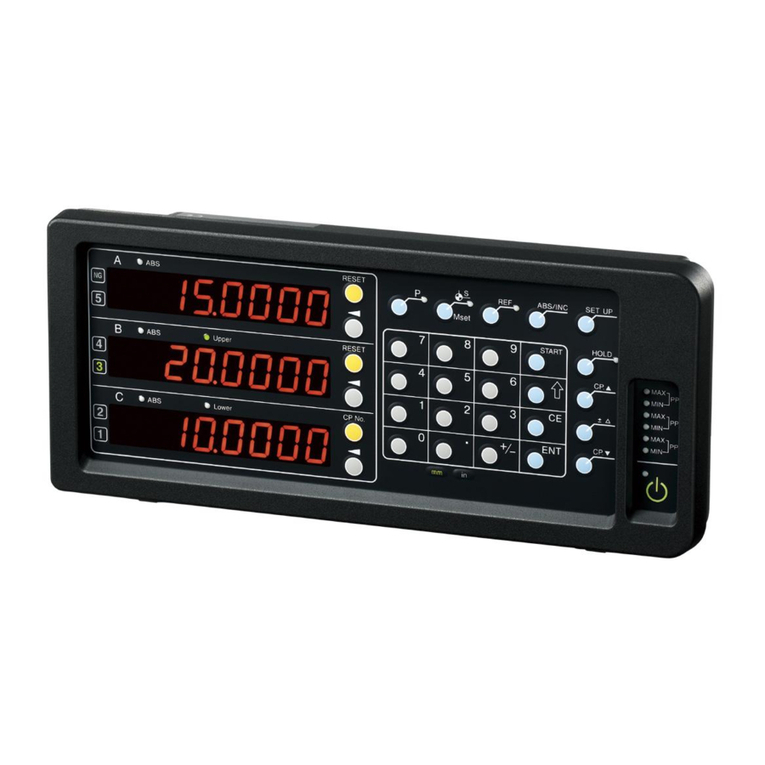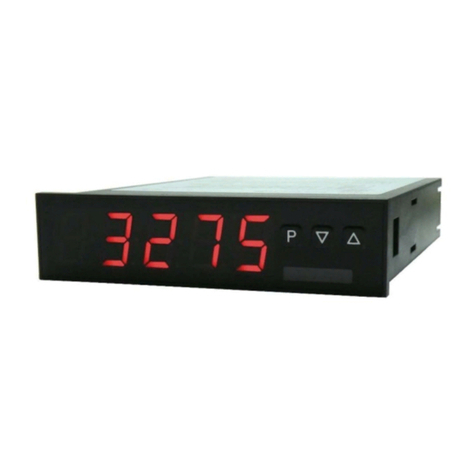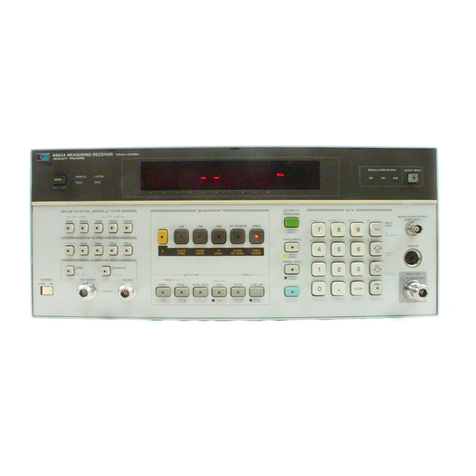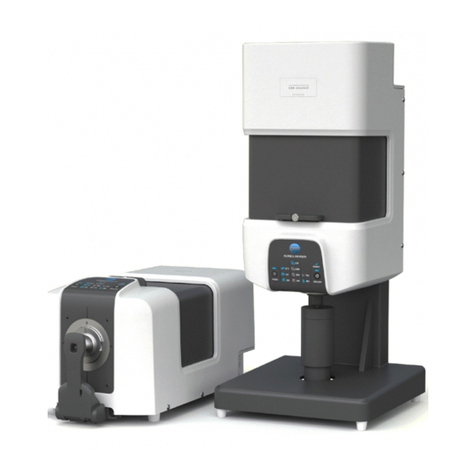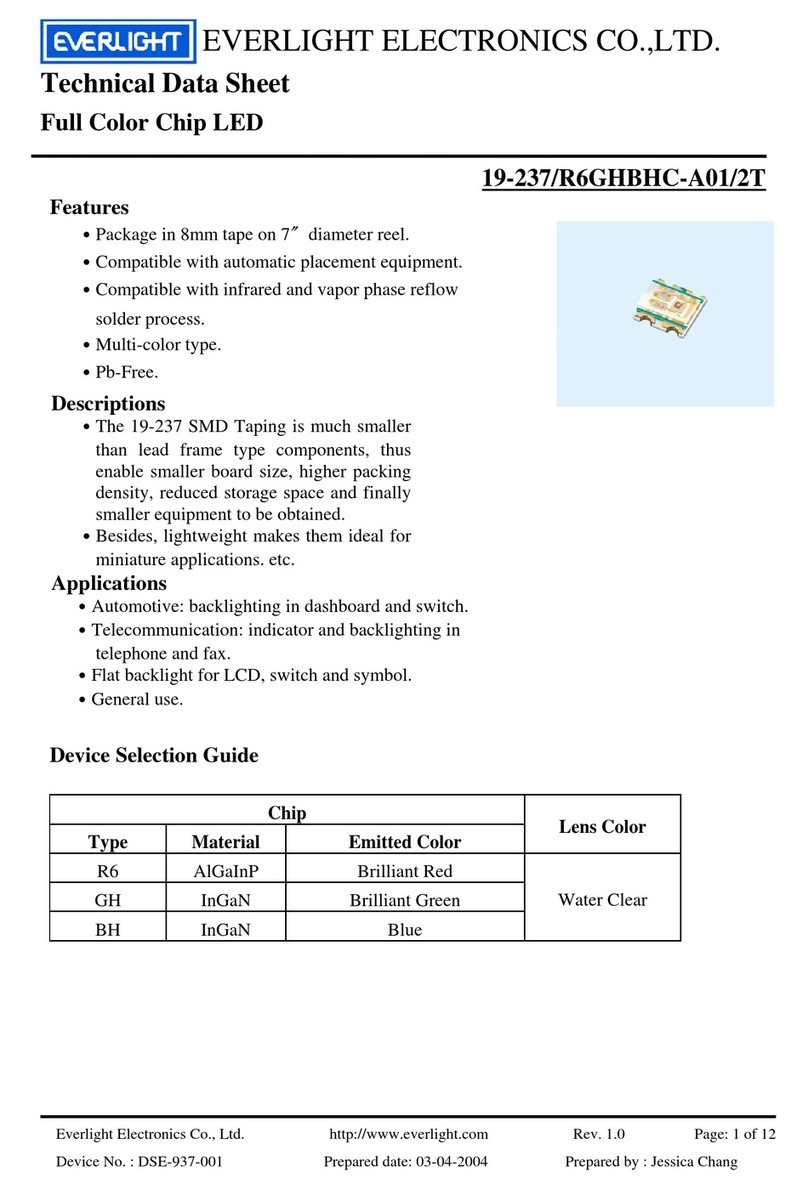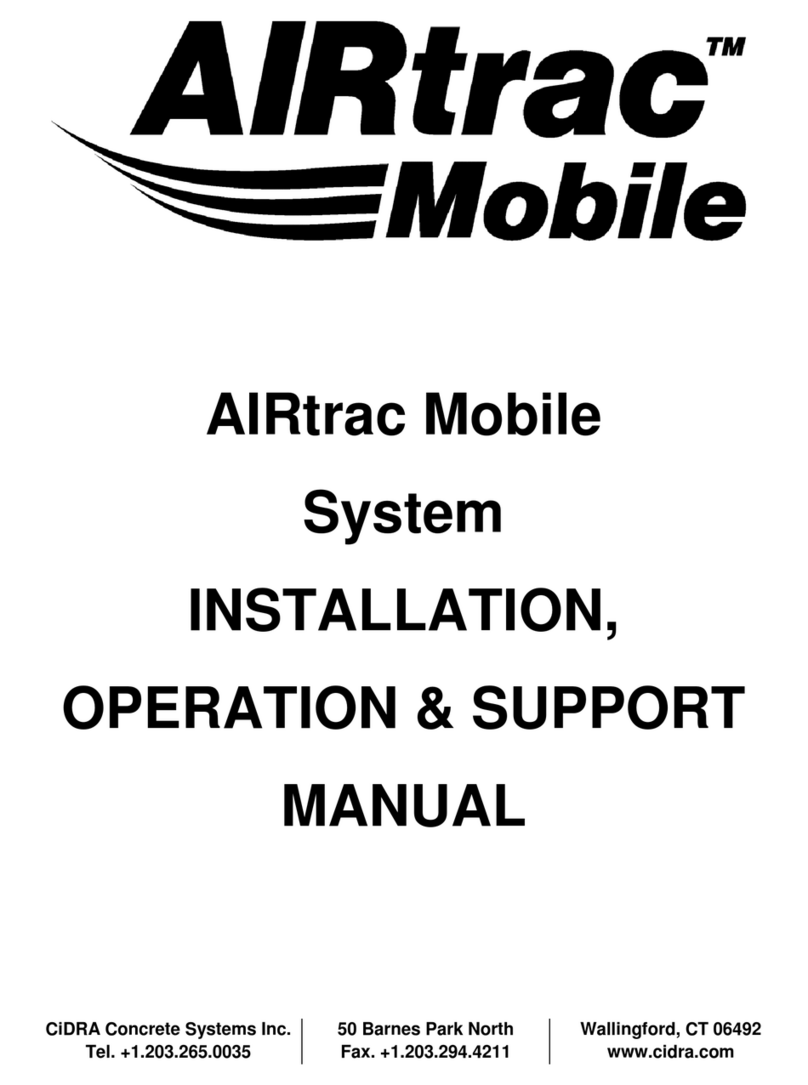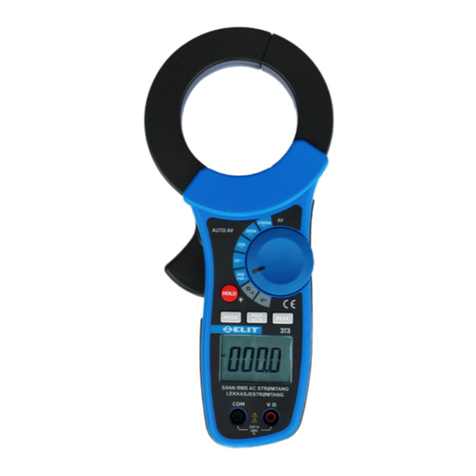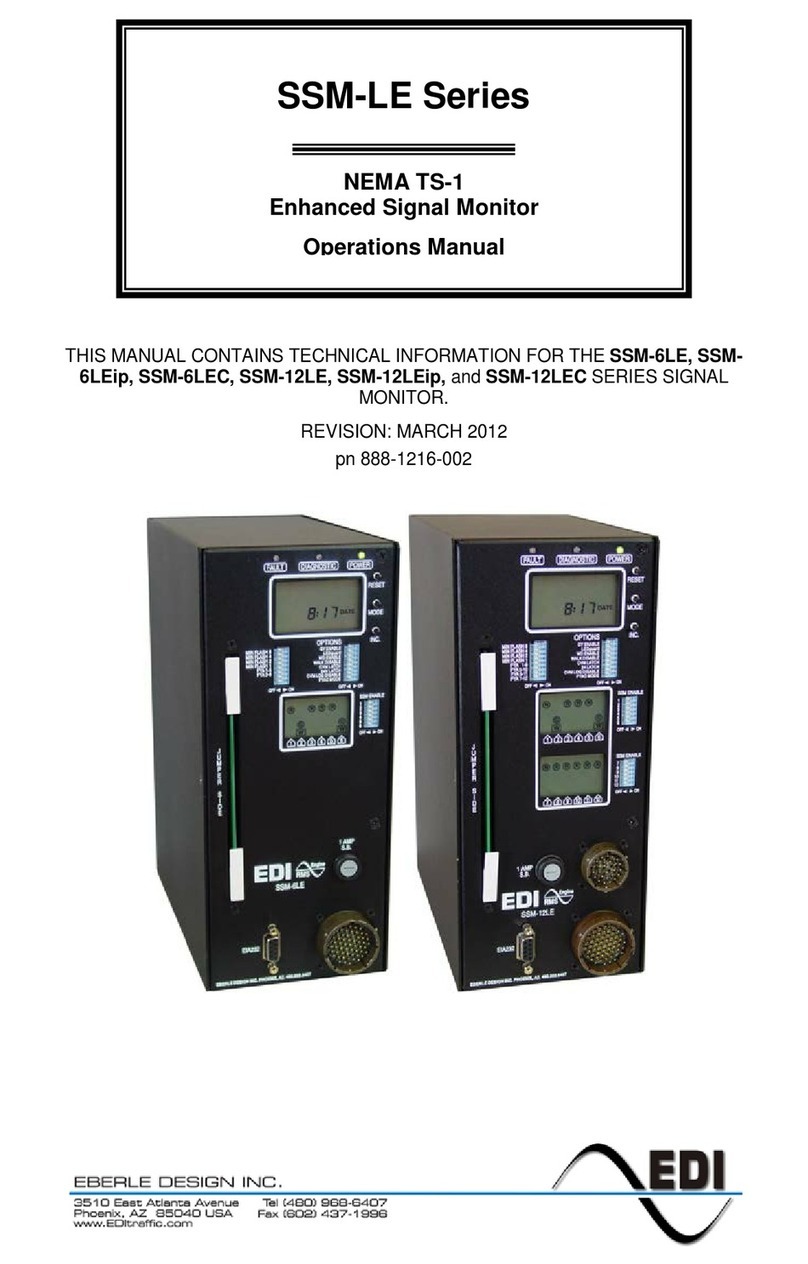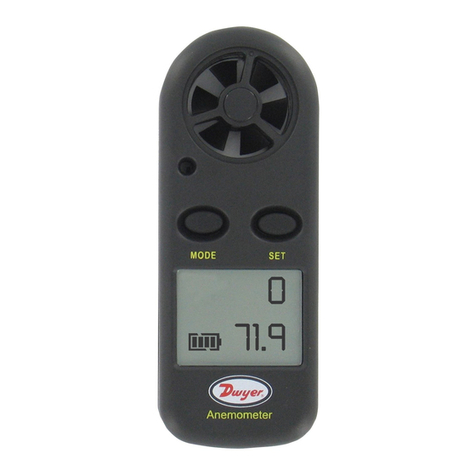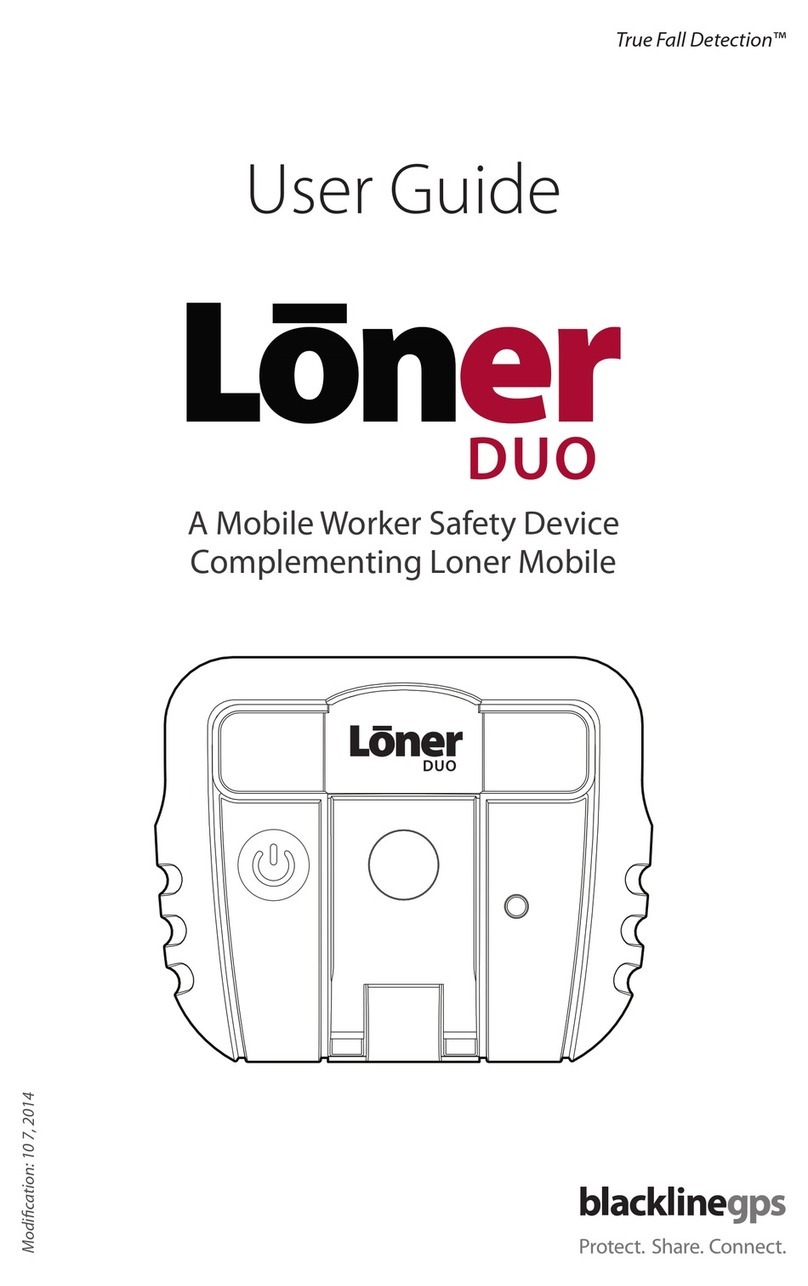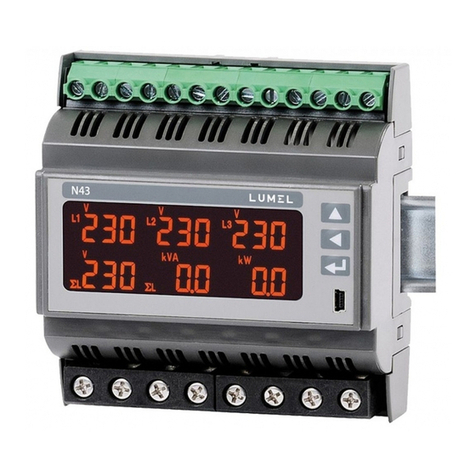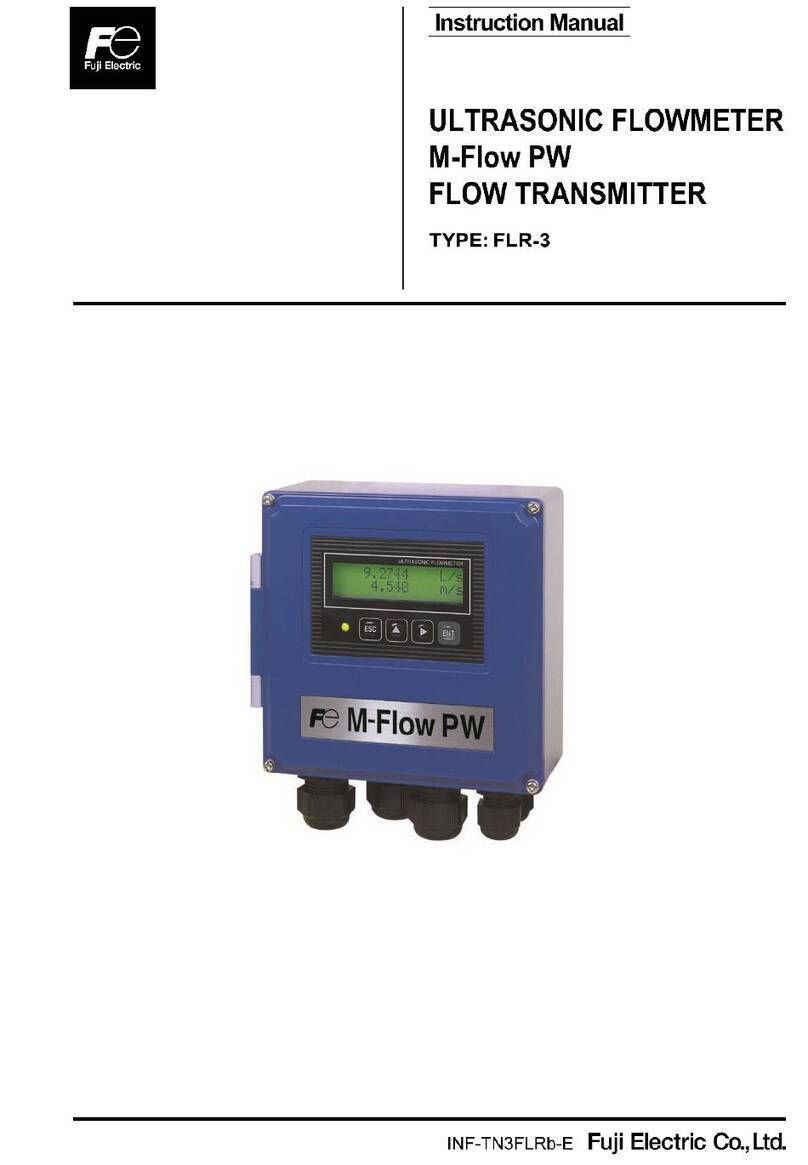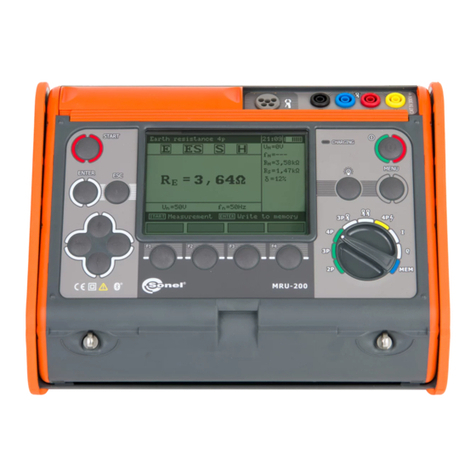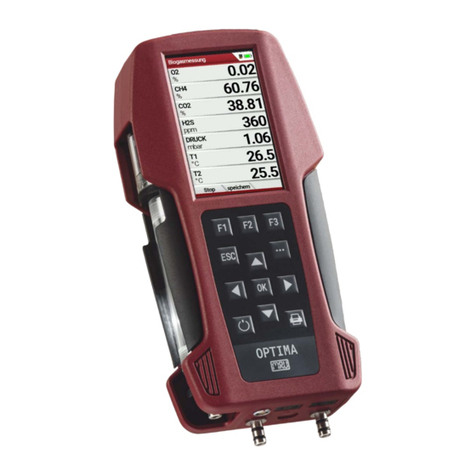Smiths Medical 1818R Operation manual

BCI PulseOx
Handheld
Manual
Get an original copy of the BCI PulseOx Handheld Manual for
manufacturer information about service, available
accessories and how to use and maintain your device.

Oximeter
Operation and Service Manual
Catalog Number 1818R
Version 7, February 2005
© 2005 Smiths Medical family of companies. All rights reserved.


Table of Contents
Oximeter Operation and Service Manual i
Table of Contents
Chapter 1: Introduction................................................................ 1-1
About This Manual..........................................................................1-1
Proprietary Notice............................................................................1-1
Warranty..........................................................................................1-1
Limited Warranty......................................................................1-1
Disclaimer of Warranties ..........................................................1-2
Conditions of Warranty.............................................................1-2
Limitation of Remedies.............................................................1-2
Warranty Procedure.........................................................................1-3
CE Notice.........................................................................................1-3
Warnings, Cautions, and Notes .......................................................1-5
Chapter 2: General Description ................................................... 2-1
Intended Use....................................................................................2-1
Features............................................................................................2-1
Description.......................................................................................2-2
Theory of Operation ........................................................................2-4
Chapter 3: Using the Oximeter.................................................... 3-1
Install the Batteries..........................................................................3-1
Installing or Replacing the Batteries.........................................3-2
Care and Handling of Sensor ....................................................3-3
Choose the Sensor............................................................................3-4
Attach the Sensor to the Patient.......................................................3-5
Clean or Disinfect the Sensors..................................................3-5
Finger Sensor for Adult or Pediatric Finger..............................3-5
Attach the Sensor to the Oximeter............................................3-6
Measuring the Patient’s % SpO2 and Pulse Rate............................3-6
Patient Numbers and Spot Check Data............................................3-8
Manually Incrementing the Patient Number.............................3-8
Clearing All Spot Check Data...................................................3-8
Low Battery Indicator......................................................................3-8
Turning Off the Oximeter................................................................3-9
Checking the Oximeter’s Performance............................................3-9

Table of Contents
ii Oximeter Operation and Service Manual
Chapter 4: Printer and Computer Interface.................................. 4-1
Computer Interface Description...................................................... 4-1
Equipment Required........................................................................ 4-1
Interface Instructions....................................................................... 4-1
Spot Check Printouts....................................................................... 4-3
Collecting Spot Check Data...................................................... 4-3
Manually Incrementing the Patient Number.............................4-3
Clearing All Spot Check Data ..................................................4-3
About the Oximeter’s Batteries and Spot Check Data .............4-3
Printing Spot Check Data .........................................................4-4
Chapter 5: Operator’s Maintenance............................................. 5-1
Batteries........................................................................................... 5-1
Disposal of batteries and rechargeable batteries.......................5-1
Sensors ............................................................................................ 5-1
Reusable Sensors ...................................................................... 5-1
Disposable Sensors................................................................... 5-2
Cleaning the Oximeter’s Surfaces................................................... 5-2
Long Term Storage.......................................................................... 5-2
Chapter 6: Operator’s Troubleshooting Chart ............................. 6-1
EMI Interference ............................................................................. 6-3
Chapter 7: Optional Supplies and Accessories............................ 7-1
Ordering Information ...................................................................... 7-2
Chapter 8: Specifications............................................................. 8-1
Equipment Classification ................................................................ 8-1
Displays, Indicators, & Keys...........................................................8-1
SpO2................................................................................................ 8-1
Pulse Rate........................................................................................ 8-2
Auxiliary Printer Output.................................................................. 8-2
Power Requirements ....................................................................... 8-2
Battery Life ..................................................................................... 8-2
Dimensions...................................................................................... 8-2
Environmental Specifications ......................................................... 8-2

Table of Contents
Oximeter Operation and Service Manual iii
Chapter 9: Service Maintenance and Repair................................ 9-1
General Description.........................................................................9-1
Power Supply and ON/OFF Circuitry .............................................9-1
Digital Section.................................................................................9-1
Analog Section..........................................................................9-3
LED Controller..........................................................................9-4
Signal Dictionary ......................................................................9-4
Test Equipment and Tools Required ...............................................9-6
Connecting a DC Power Supply......................................................9-6
Voltage Test Points..........................................................................9-7
Waveform Test Points .....................................................................9-9
Appendix: Assembly Drawings, Schematics & Parts Lists.............1

This page is intentionally left blank.

Chapter 1: Introduction
Oximeter Operation and Service Manual 1-1
Chapter 1: Introduction
About This Manual
The operator’s instructions provide installation, operation, and mainte-
nance instructions. It is intended for health-care professionals trained in
monitoring respiratory and cardiovascular activity.
The service maintenance and repair section contains circuit descriptions,
voltage and waveform test points, detailed parts lists, and circuit diagrams.
It is intended for persons trained in service, maintenance, and repair of
modern medical equipment. Thorough knowledge of this equipment’s
operation is required before attempting to repair this equipment.
Proprietary Notice
Information contained in this document is copyrighted by Smiths Medical
PM, Inc. and may not be duplicated in full or part by any person without
prior written approval of Smiths Medical PM, Inc. Its purpose is to provide
the user with adequately detailed documentation to efficiently install, oper-
ate, maintain and order spare parts for the device supplied. Every effort has
been made to keep the information contained in this document current and
accurate as of the date of publication or revision. However, no guarantee is
given or implied that the document is error free or that it is accurate regard-
ing any specification.
Warranty
Limited Warranty
Seller warrants to the original purchaser that the Product, not including
accessories, shall be free from defects in materials and workmanship under
normal use, if used in accordance with its labeling for two years from the
date of shipment to the original purchaser.
Seller warrants to the original purchaser that the reusable oximeter sensors
supplied as accessories, shall be free from defects in materials and work-
manship under normal use, if used in accordance with its labeling for one
year from the date of shipment to the original purchaser (USA only).

Chapter 1: Introduction
1-2 Oximeter Operation and Service Manual
Disclaimer of Warranties
THE FOREGOING EXPRESS WARRANTY, AS CONDITIONED AND
LIMITED, IS IN LIEU OF AND EXCLUDES ALL OTHER WARRAN-
TIES WHETHER EXPRESS OR IMPLIED, BY OPERATION OF LAW
OR OTHERWISE, INCLUDING BUT NOT LIMITED TO, ANY
IMPLIED WARRANTIES OF MERCHANTABILITY OR FITNESS FOR
A PARTICULAR PURPOSE.
Seller disclaims responsibility for the suitability of the Product for any par-
ticular medical treatment or for any medical complications resulting from
the use of the Product. This disclaimer is dictated by the many elements
which are beyond Seller’s control, such as diagnosis of patient, conditions
under which the Product may be used, handling of the Product after it
leaves Seller’s possession, execution of recommended instructions for use
and others.
Conditions of Warranty
This warranty is void if the Product has been altered, misused, damaged by
neglect or accident, not properly maintained or recharged, or repaired by
persons not authorized by Seller. Misuse includes, but is not limited to, use
not in compliance with the labeling or use with accessories not manufac-
tured by Seller. This warranty does not cover normal wear and tear and
maintenance items.
Limitation of Remedies
The original purchaser’s exclusive remedy shall be, at Seller’s sole option,
the repair or replacement of the Product. THIS IS THE EXCLUSIVE
REMEDY. In no event will Seller’s liability arising out of any cause
whatsoever (whether such cause is based in contract, negligence, strict
liability, tort or otherwise) exceed the price of the Product and in no
event shall Seller be responsible for consequential, incidental or special
damages of any kind or nature whatsoever, including but not limited
to, lost business, revenues and profits.

Chapter 1: Introduction
Oximeter Operation and Service Manual 1-3
Warranty Procedure
To obtain warranty service in the USA, you must request a Customer Ser-
vice Report (CSR) number from Technical Service. Reference the CSR
number when returning your Product, freight and insurance prepaid, to:
Smiths Medical PM, Inc., N7 W22025 Johnson Drive, Waukesha, WI
53186-1856. Telephone: 1-800-558-2345. Facsimile: 262-542-3325. Seller
will not be responsible for unauthorized returns or for loss or damage to the
Product during the return shipment. The repaired or replaced Product will
be shipped, freight prepaid, to Purchaser.
To obtain warranty service outside the USA, contact your local distributor.
Keep all original packing material, including foam inserts. If you need to
ship the device, use only the original packaging material, including inserts.
Box and inserts should be in original condition. If original shipping mate-
rial in good condition is not available, it should be purchased from Smiths
Medical PM, Inc.
Damages occurred in transit in other than original shipping containers are
the responsibility of the shipper. All costs incurred returning devices for
repair are the responsibility of the shipper.
CE Notice
Marking by the symbol C0473 indicates compliance of this device to the
Medical Device Directive 93/42/EEC.
Authorized Representative (as defined by the Medical Device Directive):
Smiths Medical International Ltd.
Colonial Way, Watford, Herts,
UK, WD24 4LG
Phone: (44) 1923 246434
Fax: (44) 1923 240273

Chapter 1: Introduction
1-4 Oximeter Operation and Service Manual
Definition of Symbols
SYMBOL DEFINITION
2Attention, consult accompanying documents.
rType BF equipment
7Refer servicing to qualified service personnel.
REF Catalog Number
SN Serial number
ROn
QOff
yDate of Manufacture
1Non AP Device
CUse by

Chapter 1: Introduction
Oximeter Operation and Service Manual 1-5
Warnings, Cautions, and Notes
2WARNING! Federal law (USA) restricts this device to sale
by, or on the order of, a physician.
2WARNING! This device is not intended for continuous
patient monitoring. This device is intended to measure the
patient’s %SpO2 and pulse rate values. There are no audi-
ble or visible alarms.
2WARNING! This device must be used in conjunction with
clinical signs and symptoms. This device is only intended
to be an adjunct in patient assessment.
2WARNING! Do not use this device in the presence of flam-
mable anesthetics.
2WARNING! Do not use this device in the presence of mag-
netic resonance imaging (MR or MRI) equipment.
2WARNING! Prolonged use or the patient’s condition may
require changing the sensor site periodically. Change sen-
sor site and check skin integrity, circulatory status, and
correct alignment at least every 4 hours.
2WARNING! When connecting this monitor to any instru-
ment, verify proper operation before clinical use. Refer to
the instrument’s user manual for full instructions. Acces-
sory equipment connected to the monitor’s data interface
must be certified according to the respective IEC stan-
dards, i.e., IEC 950 for data processing equipment or IEC
601-1 for electromedical equipment. All combinations of
equipment must be in compliance with IEC 601-1-1 sys-
tems requirements. Anyone connecting additional equip-
ment to the signal input port or signal output port
configures a medical system, and, therefore, is responsi-
ble that the system complies with the requirements of the
system standard IEC 601-1-1.

Chapter 1: Introduction
1-6 Oximeter Operation and Service Manual
2WARNING! IEC 950 approved equipment must be placed
outside of the “patient environment.” The patient environ-
ment is defined as an area 1.5 m (4.92 feet) from the
patient.
2WARNING! When attaching sensors with Microfoam®1
tape, do not stretch the tape or attach the tape too tightly.
Tape applied too tightly may cause inaccurate readings
and blisters on the patient’s skin (lack of skin respiration,
not heat, causes the blisters).
CAUTION! Observe proper battery polarity (direction)
when replacing batteries.
CAUTION! Do not autoclave, ethylene oxide sterilize, or
immerse the sensors in liquid. Evidence that liquid has
been allowed to enter the monitor voids the warranty.
CAUTION! This device is intended for use by persons
trained in professional health care. The operator must be
thoroughly familiar with the information in this manual
before using the device. (Notice: This device is not
approved for home use by a non-health care profes-
sional.)
CAUTION! Connect only the printer adapter specifically
intended for use with this device (see Optional Supplies
and Accessories).
NOTE! Operation of this device may be adversely affected
in the presence of strong electromagnetic sources, such
as electrosurgery equipment.
1. Microfoam is a registered trademark of the 3M Company.
Figure 1-1: Patient Environment

Chapter 1: Introduction
Oximeter Operation and Service Manual 1-7
NOTE! Operation of this device may be adversely affected
in the presence of computed tomograph (CT) equipment.
NOTE! Use only SpO2sensors supplied with, or specifi-
cally intended for use with, this device.
NOTE! SpO2measurements may be adversely affected in
the presence of high ambient light. Shield the sensor area
(with a surgical towel, for example) if necessary.
NOTE! Dyes introduced into the bloodstream, such as
methylene blue, indocyanine green, indigo carmine,
patent blue V (PBV), and fluorescein, may adversely affect
the accuracy of the SpO2reading.
NOTE! Any condition that restricts blood flow, such as
use of a blood pressure cuff or extremes in systemic vas-
cular resistance, may cause an inability to determine
accurate pulse rate and SpO2readings.
NOTE! Remove fingernail polish or false fingernails before
applying SpO2sensors. Fingernail polish or false finger-
nails may cause inaccurate SpO2readings.
NOTE! The presence of dyshemoglobins, such as carbox-
yhemoglobin (with CO-poisoning) or methemoglobin (with
sulfonamide therapy) may adversely affect the accuracy
of the SpO2measurement.
NOTE! Hazards arising from software errors have been
minimized. Hazard analysis was performed to meet
EN1441: 1997.
NOTE! Optical cross-talk can occur when two or more
sensors are placed in close proximity. It can be eliminated
by covering each site with opaque material.

This page is intentionally left blank.

Chapter 2: General Description
Oximeter Operation and Service Manual 2-1
Chapter 2: General Description
Intended Use
The oximeter provides fast, reliable SpO2and pulse rate measurements. It
can be used in the hospital or clinical environment, and during emergency
air or land transport. The oximeter will operate accurately over an ambient
temperature range of 32 to 131°F (0 to 55°C). The oximeter works with
all BCI®oximetry sensors providing SpO2and pulse rate on all patients
from neonate to adult.
Features
• Provides fast, reliable SpO2and pulse rate measurements on any
patient, from neonates to adults.
• Ideally suited for use in intensive care units, in outpatient clinics,
in emergency rooms, or during emergency air or land transport.
• Portable and lightweight. Weighs only 9 ounces (255 grams) with-
out the batteries.
• Ergonomically designed to fit comfortably in the palm of your
hand.
• Uses three standard alkaline batteries (type LR 14) or three
rechargeable (type KR27/50) NiCad “C” cell batteries.
• Battery life is approximately twenty-four (24) hours in continuous
mode or eighty (80) hours in spot check mode.
• Bright, easy-to-read LED displays indicate SpO2and pulse rate
measurements.
• An eight-segment LED bar graph indicates pulse strength.
• Automatically turns off after patient’s finger is removed from the
sensor.
• Low battery indicator lights when about two hours of battery use
remains.
• Optionally connects to an external printer or computer, providing
spot check printouts of SpO2and pulse rate readings.
• Collects up to seventeen (17) hours of spot check data for up to
ninety-nine (99) patients for printout later.

Chapter 2: General Description
2-2 Oximeter Operation and Service Manual
Description
PATIENT CABLE/SENSOR
The sensor connects here. If you need the extra length of the patient cable,
attach the sensor to the patient cable, then attach the patient cable to the
oximeter’s PATIENT CABLE/SENSOR connector. The serial printer or PC
communication cable is also connected here.
% SpO2DISPLAY
The % SpO2value is shown here. Dashes ( -- ) indicate the oximeter is
unable to calculate the SpO2value.
PULSE RATE DISPLAY
The pulse rate value is shown in beats per minute (BPM). Dashes ( --- )
indicate the oximeter is unable to calculate the pulse rate value. Flashing
255 indicates the pulse rate value is greater than 255.
Figure 2-1: Oximeter Controls
Patient Cable/Sensor
% SpO2Display
Pulse Rate Display
Pulse Strength Bar Graph
Rand QKeys
Low Battery Indicator
Batteries and
Access Door

Chapter 2: General Description
Oximeter Operation and Service Manual 2-3
PULSE STRENGTH BARGRAPH
The eight-segment bar graph “sweeps” with the patient’s pulse beat, indi-
cating pulse strength. The bar graph is logarithmically scaled to indicate a
wide range of pulse strengths.
Rand QKEYS
Press “R”to turn on the oximeter. Press “Q”to turn off the oximeter.
While the oximeter is on, momentarily pressing the “R”key increments the
patient number. While the oximeter is on, pressing and holding the “R”key
for about six seconds clears all the spot check data and resets the patient
number to P1.
The oximeter turns off automatically two minutes after the sensor is
removed from the patient or after the sensor is disconnected from the
oximeter. This feature extends the battery use time.
LOW BATTERY INDICATOR
When about two hours of battery use time remains, the left-most bar graph
segment lights. The oximeter will continue to operate normally until the
batteries no longer have sufficient power to operate the oximeter. At that
point, the oximeter automatically turns off.
BATTERIES AND ACCESS DOOR
The oximeter’s three “C” cell batteries are accessed through this door on
the backside of the oximeter. See Installing or Replacing the Batteries for
details on installing or replacing the batteries.

Chapter 2: General Description
2-4 Oximeter Operation and Service Manual
Theory of Operation
The oximeter determines SpO2and pulse rate by passing two wavelengths
of light, one red and one infrared, through body tissue to a photodetector.
During measurement, the signal strength resulting from each light source
depends on the color and thickness of the body tissue, the sensor place-
ment, the intensity of the light sources, and the absorption of the arterial
and venous blood (including the time varying effects of the pulse) in the
body tissues.
The oximeter processes these signals, separating the time invariant parame-
ters (tissue thickness, skin color, light intensity, and venous blood) from the
time variant parameters (arterial volume and SpO2) to identify the pulse
rate and calculate oxygen saturation. Oxygen saturation calculations can be
performed because oxygen saturated blood predictably absorbs less red
light than oxygen depleted blood.
Figure 2-2: Oximetry Theory of Operation
Low intensity red and infrared LED light sources
Detector

Chapter 3: Using the Oximeter
Oximeter Operation and Service Manual 3-1
Chapter 3: Using the Oximeter
Unpack the Oximeter
Carefully remove the oximeter and its accessories from the shipping car-
ton. Save the packing materials in case the oximeter must be shipped or
stored.
Compare the packing list with the supplies and equipment you received to
make sure you have everything you’ll need.
Install the Batteries
The oximeter uses three standard “C” cell batteries (type LR 14). You can
use disposable alkaline batteries or rechargeable (type KR27/50) batteries.
If you use disposable batteries, be sure to dispose of them in compliance
with your institution’s guidelines and local ordinances.
If you use rechargeable batteries, it’s best to have two sets of batteries on
hand. That way, you can use one set of batteries in the oximeter while the
other set of batteries is recharging.
NOTE! If you’ve collected spot check data for printing,
make sure you print the spot check data before removing
and replacing the oximeter’s batteries. Removing the bat-
teries erases spot check data from the oximeter’s memory.
Table of contents


